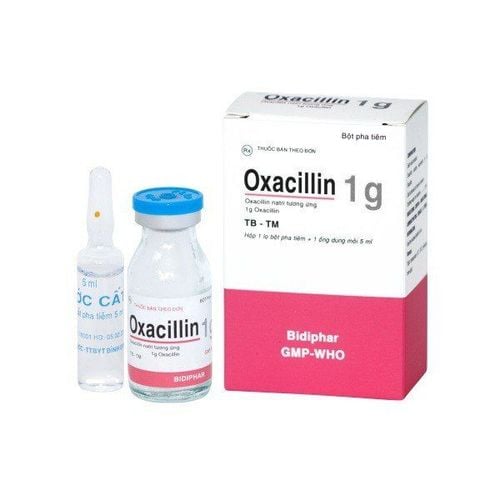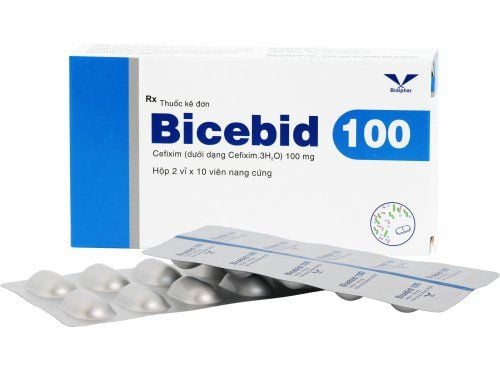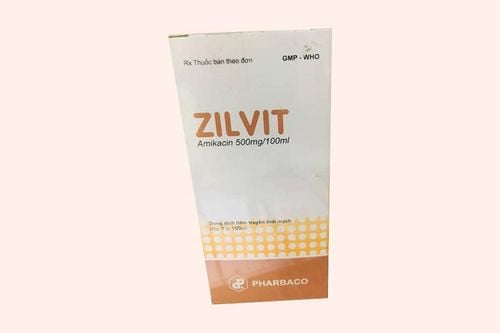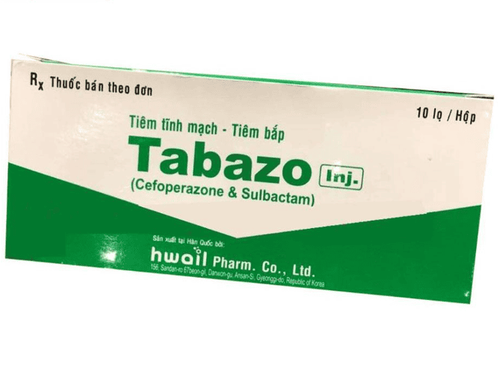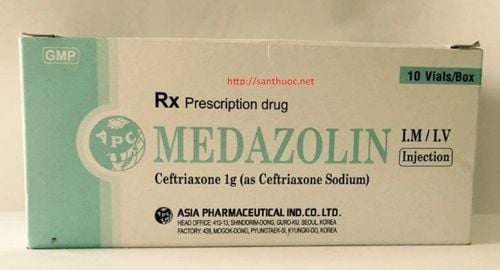This is an automatically translated article.
Midapran is a 4th generation cephalosporin antibiotic with a broad spectrum of activity against many gram-negative and gram-positive bacteria. To be able to understand the uses and things to be aware of when using the drug, read through the article below.1. What does Midapran do?
Midapran medicine has the main ingredient is Cefpirom (in the form of cefpirom sulfate) 2g. Prepare a sterile lyophilized powder vial for injection.
Cefpirome is a cephalosporin antibiotic similar to cefotaxime (a 3rd generation cephalosporine) with bactericidal effect by inhibiting bacterial cell wall synthesis. Cefpirome penetrates rapidly through the bacterial cell wall and binds with high affinity to intracellular penicillin-binding protein (PBP). Binding to PBP exerts an inhibitory effect on cell wall synthesis. Cefpirome is stable to beta-lactamase enzymes due to its reduced affinity for binding to these enzymes.
This is a strong antibiotic, used in severe infections, some life-threatening infections, and should not be used as a routine.
2. Indications and contraindications of Midapran
Indications:
Midapran drug is used in cases of infections caused by bacteria sensitive to cefpirom:
Respiratory infections and urinary tract infections with life-threatening complications; Sepsis, skin infections, fever with neutropenia in immunocompromised or non-immunocompromised individuals. Contraindications:
Midapran drug is not used in the following cases:
In case of allergy or hypersensitivity to cefpirome sulfate or ingredients in the formula. Do not use if you are allergic to other cephalosporin derivatives.
3. Dosage and how to use Midapran
How to use:
Use cefpirom by slow intravenous injection for 3-5 minutes or intravenous infusion for 20-30 minutes.
Mixing solution for intravenous injection: 1g vial in 10ml or 2g vial in 20ml sterile water for injection. Prepare solution for intravenous infusion: Vial of 1g or 2g diluted in 100 ml of sterile water for infusion with 0.9% sodium chloride solution, 5% glucose solution or Ringer lactate solution. Dosage:
Adults: Dosage and duration of drug treatment usually depend on the type, degree of infection and kidney function of the patient.
The usual dose is 1-2g every 12 hours. High dose 2g, 2 times/day in case: Sepsis, severe infection with life-threatening complications or infection with resistant bacteria. Lower respiratory tract infections: Injection or infusion of 2 g every 12 hours. Complicated lower urinary tract infections: 1g every 12 hours; High dose if weight 2 g every 12 hours. Children: Usually, treatment with cefpirom in children is only instituted when other treatments are not possible in urgent cases. If absolutely necessary, the dose for children can be calculated, the dose is calculated per body weight. Not recommended for use in children under 12 years of age.
Renal failure: For people with renal failure, after taking a loading dose of 1 - 2 g, depending on the degree of infection, the maintenance dose is adjusted based on ClCr:
Clcr (ml/min) from 20-50ml/ min: Initial dose is 1g and maintenance dose is 0.5g x 2 times/day or initial dose is 2g, then dose is 1g x 2 times/day. Clcr from 5-20ml/min: Initial dose is 1g and maintenance dose is 0.5g x 1 time/day or initial dose is 2g, then dose is 1g x 1 time/day. Clcr < 5 (Hemodialysis): Initial dose is 1g and maintenance dose is 0.5g/day plus 0.25g immediately after dialysis or initial dose is 2g and maintenance dose is 1g/day and plus 0.5 g immediately after dialysis Patients with hepatic impairment: No dose adjustment required.
Elderly: No dose adjustment is required, except in cases of renal impairment.
4. Side effects of the drug Midapran
Common side effects: Diarrhea, nausea and vomiting, causing phlebitis at the injection site, rash, increased transaminases, increased alkaline phosphatase and bilirubin in the liver; increased blood creatinine.
Uncommon side effects: Headache, causing irritation at injection site, fever, allergies, anorexia, Candida infection, thrombocytopenia, thrombocytopenia, causing eosinophilia, hypotension, dizziness, insomnia, convulsions, abdominal pain, constipation, stomatitis; allergic reactions such as itching, urticaria, difficulty breathing, altered taste, decreased renal function.
Rare: Anaphylactic reactions, somnolence; leukopenia; cause hemolytic anemia; agitation, confusion; bleeding or pseudomembranous colitis; cholestatic jaundice, bronchial asthma; hypokalemia, vaginitis or cervicitis caused by Candida, a slight risk of superinfection with organisms not sensitive to cefpirome.
If you experience any side effects during the course of taking the medicine, you should tell your healthcare provider for treatment if necessary.
5. Things to note when taking Midapran
Before starting treatment with the antibiotic cefpirome, the patient's history of allergy to cephalosporins, penicillins or other drugs should be carefully checked. In the case of penicillin allergy, the patient is at risk of cross-allergic reactions that can cause severe reactions to cephalosporins.
For patients with renal failure, the dose should be reduced. There is an increased risk of adverse reactions to the kidneys, if cefpirom is used in combination with aminoglycoside antibiotics (gentamicin, streptomycin...)
Use this drug with caution in people with colitis or other diseases. other gastrointestinal disorders.
Like other broad-spectrum antibiotics, the use of Cefpirome also causes infections with non-susceptible bacteria or fungi. During treatment as well as after treatment if it can cause severe and acute diarrhea when used.
Note to pregnant women: Cefpirome should be used sparingly and with caution in pregnant women, due to insufficient availability but close research in pregnant women and limited clinical experience.
It is recommended that breast-feeding should be discontinued during treatment with cefpirome because there are insufficient data to assess the risk in children.
6. Midapran drug interactions
Probenecid when used concurrently increases the risk of toxicity.
There is potential for nephrotoxicity when cephalosporins are used together with other nephrotoxic drugs, e.g. loop diuretics, especially when used in patients with pre-existing impaired renal function.
Drug incompatibility: Do not share the drug with bicarbonate solution; The antibiotic cefpirome should not be mixed with other antibiotics in the same syringe or with other solutions for infusion (especially with aminoglycosides).
Thus, Midapran is used as prescribed by a doctor in case of serious bacterial infection. Limit the use of antibiotics anyf when not absolutely necessary.





